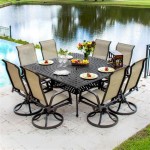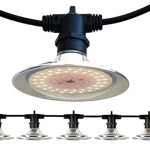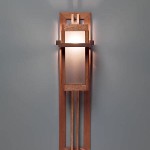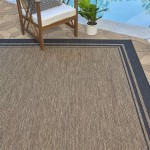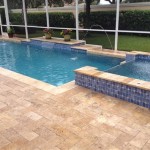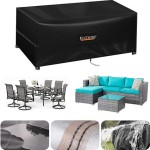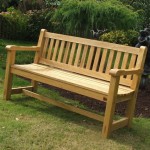Gas Fireplaces for Outdoor Decks: Extending Your Living Space
Outdoor living spaces have become increasingly popular, providing a valuable extension of the home for relaxation, entertainment, and dining. A gas fireplace on an outdoor deck elevates this experience, offering warmth, ambiance, and a focal point for social gatherings. Understanding the different types of gas fireplaces available, the considerations for installation, safety precautions, and maintenance requirements is crucial for making an informed decision and enjoying a safe and functional outdoor feature.
Types of Gas Fireplaces Suited for Outdoor Decks
Choosing the right type of gas fireplace largely depends on the desired aesthetic, available space, budget, and intended use. Several options cater to diverse needs and preferences, each with its unique advantages and disadvantages.
Prefabricated Gas Fireplaces: These are self-contained units that arrive pre-built, simplifying the installation process. They typically consist of a firebox, burner, and surround, and are available in a variety of styles, from traditional to contemporary. Prefabricated units often come with safety features like automatic shut-off valves and flame failure detection systems. These fireplaces generally offer a more budget-friendly option compared to custom-built structures, and their ease of installation makes them appealing to homeowners looking for a quick and straightforward solution.
Linear Gas Fireplaces: Characterized by their elongated, horizontal design, linear gas fireplaces are a popular choice for contemporary outdoor spaces. They offer a sleek and modern look, often featuring glass media or decorative stones instead of traditional logs. Linear fireplaces can be incorporated into deck railings, walls, or as standalone features, adding a touch of sophistication to the outdoor environment. Their linear design allows for a wider viewing area of the flames, creating a visually appealing focal point.
Gas Fire Pits: Gas fire pits provide a more communal and casual atmosphere, ideal for gatherings around a central flame. Available in various shapes and sizes, from round to square to rectangular, fire pits can be constructed from materials like concrete, stone, or metal. They typically use propane or natural gas as fuel and can be customized with different burner styles and decorative media. Gas fire pits are often lower to the ground, promoting a more intimate and interactive experience among users.
DIY Fireplace Kits: For homeowners with construction experience, DIY fireplace kits offer a semi-customizable option. These kits typically include the firebox, burner, and necessary components, but require the homeowner to build the surrounding structure using their chosen materials. DIY kits offer more flexibility in terms of design and aesthetics, allowing for personalization to match the existing deck and outdoor decor. However, proper installation and adherence to safety codes are crucial for ensuring safe operation.
Installation Considerations for Outdoor Gas Fireplaces
Proper installation is paramount for ensuring the safe and efficient operation of an outdoor gas fireplace. Several factors must be considered, from gas line connections to ventilation requirements, and adhering to local building codes is essential.
Gas Line Installation: Connecting the gas fireplace to a natural gas line requires the expertise of a licensed gas fitter. The size and type of gas line must be appropriate for the fireplace's BTU (British Thermal Unit) rating to ensure adequate fuel supply. Proper connections and leak testing are crucial for preventing gas leaks and ensuring safety. For propane-fueled fireplaces, a propane tank must be installed in accordance with local regulations and refilled as needed.
Ventilation: Although outdoor gas fireplaces do not typically require the same level of ventilation as indoor units, adequate airflow is still important. Ensure the fireplace is positioned in an area with sufficient ventilation to prevent the buildup of carbon monoxide. Avoid placing the fireplace in enclosed spaces or near flammable materials.
Clearance to Combustibles: Maintaining proper clearance between the fireplace and combustible materials, such as wood railings, deck boards, and furniture, is critical for preventing fires. Consult the fireplace manufacturer's specifications for recommended clearance distances and adhere to local building codes. Using non-combustible materials for the fireplace surround and nearby surfaces can further enhance safety.
Deck Compatibility: The structural integrity of the deck must be evaluated to ensure it can support the weight of the gas fireplace. Reinforcements may be necessary for heavier units. Also, consider the deck material itself. Composite decking, while durable, may have different heat tolerances than traditional wood. Consult with a qualified contractor to assess the deck's suitability for supporting a gas fireplace.
Permits and Inspections: Before installing a gas fireplace, obtain the necessary permits from local building authorities. Permit requirements vary depending on location, but typically involve submitting plans and specifications for review. After installation, a building inspector will inspect the fireplace to ensure it complies with all applicable codes and regulations. This inspection process helps ensure the fireplace is installed safely and correctly.
Safety Precautions and Maintenance
Operating a gas fireplace safely and maintaining it properly are essential for ensuring its longevity and preventing accidents. Implementing safety protocols and conducting regular maintenance are integral components of responsible ownership.
Carbon Monoxide Safety: Although outdoor gas fireplaces pose a lower risk of carbon monoxide poisoning compared to indoor units, it's still important to be aware of the potential dangers. Install a carbon monoxide detector in nearby indoor spaces, such as adjoining rooms or enclosed porches, to provide an early warning in case of leaks. Symptoms of carbon monoxide poisoning include headache, dizziness, nausea, and confusion.
Supervision and Child Safety: Never leave a gas fireplace unattended, especially when children or pets are present. The flames and hot surfaces can pose a burn hazard. Establish clear boundaries and teach children about the dangers of fire. Consider using a fireplace screen or guard to prevent accidental contact with the flames. Secure propane tanks properly to prevent tipping or leaks.
Regular Cleaning and Maintenance: Inspect the gas fireplace regularly for any signs of damage or wear. Clean the burner ports and firebox to remove debris and ensure proper airflow. Check the gas line connections for leaks using a soapy water solution. If you notice any unusual smells, sounds, or performance issues, turn off the gas supply immediately and contact a qualified technician. Schedule an annual professional inspection and cleaning to ensure the fireplace is operating safely and efficiently.
Proper Fuel Storage (Propane): If using a propane-fueled fireplace, store the propane tank in a well-ventilated area away from heat sources and ignition sources. Never store propane tanks indoors or in enclosed spaces. When changing propane tanks, ensure the gas valve is completely closed and follow the manufacturer's instructions for proper connection and tightening. Regularly inspect the tank and connections for any signs of damage or leaks.
Emergency Procedures: Familiarize yourself with the emergency shut-off procedures for the gas fireplace. Know the location of the gas shut-off valve and how to operate it. Keep a fire extinguisher nearby and know how to use it effectively. In case of a gas leak, evacuate the area immediately and contact the fire department or gas company.
Incorporating a gas fireplace into an outdoor deck design can be a significant enhancement, providing warmth, ambiance, and a gathering place for friends and family. Careful consideration of the type of fireplace, proper installation techniques, adherence to safety precautions, and diligent maintenance practices are essential for maximizing enjoyment and minimizing risks. By prioritizing safety and following best practices, homeowners can create a stunning and functional outdoor living space that extends the comfort and beauty of their home.

Heat Glo Courtyard Outdoor Gas Fireplace Fireside Hearth And Leisure

Outdoor Patio Gas Fireplace

Custom Outdoor Gas Fireplace By Fine S Traditional Patio Other Hearth Houzz

30 Outdoor Fireplace Ideas For A Cozy Backyard Hgtv

25 Outdoor Fireplace Ideas Fireplaces Fire Pits

Outdoor Fireplaces

Outdoor Fireplace Ideas Inspiration Dutchies Stoneworks

Outdoor Patio Gas Fireplace

30 Outdoor Fireplace Ideas For A Cozy Backyard Hgtv

Can You Have An Outdoor Fireplace On A Deck

